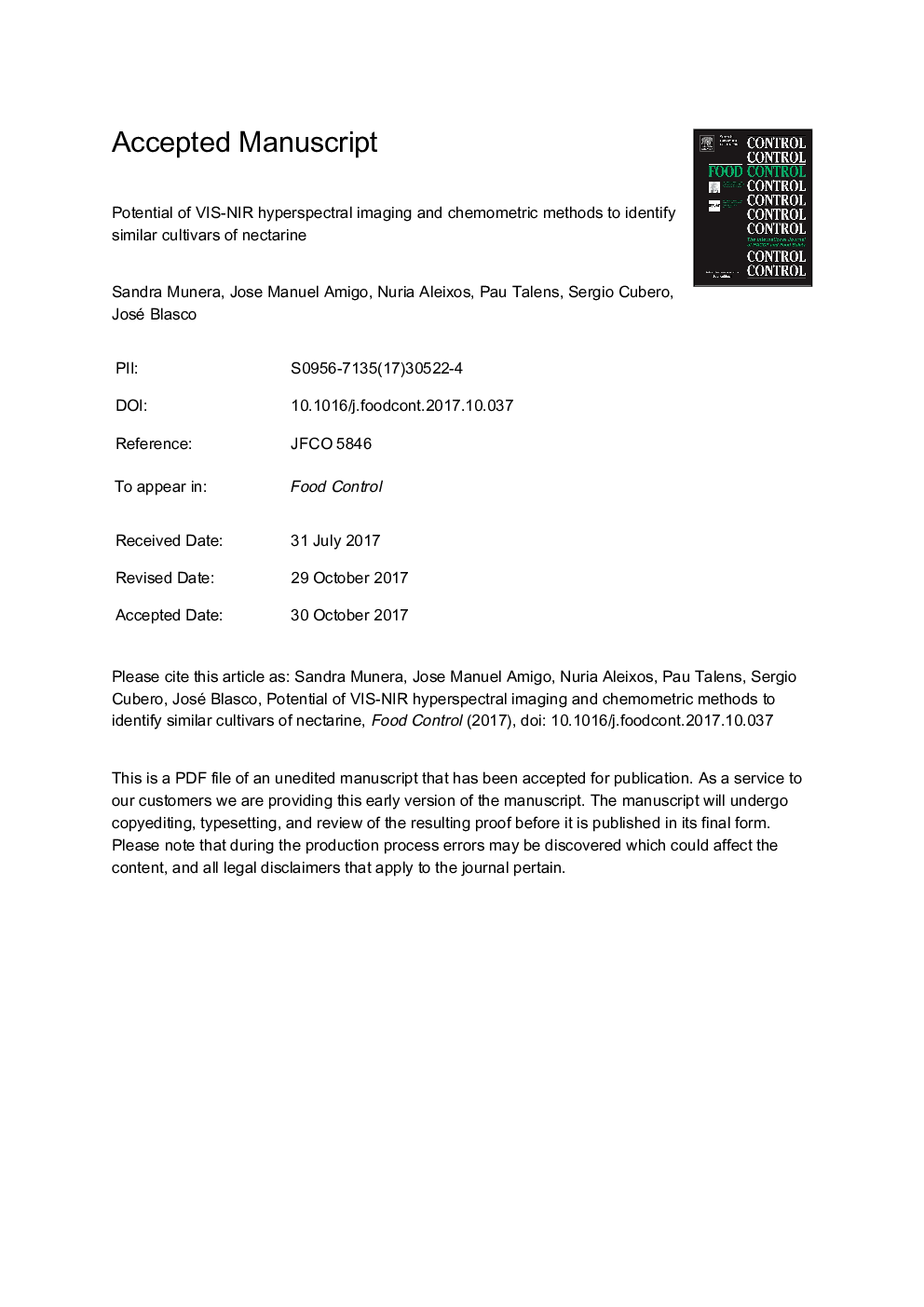| Article ID | Journal | Published Year | Pages | File Type |
|---|---|---|---|---|
| 8888094 | Food Control | 2018 | 33 Pages |
Abstract
Product inspection is essential to ensure good quality and to avoid fraud. New nectarine cultivars with similar external appearance but different physicochemical properties may be mixed in the market, causing confusion and rejection among consumers, and consequently affecting sales and prices. Hyperspectral reflectance imaging in the range of 450-1040Â nm was studied as a non-destructive method to differentiate two cultivars of nectarines with a very similar appearance but different taste. Partial least squares discriminant analysis (PLS-DA) was used to develop a prediction model to distinguish intact fruits of the cultivars using pixel-wise and mean spectrum approaches, and then the model was projected onto the complete surface of fruits allowing visual inspection. The results indicated that mean spectrum of the fruit was the most accurate method, a correct discrimination rate of 94% being achieved. Wavelength selection reduced the dimensionality of the hyperspectral images using the regression coefficients of the PLS-DA model. An accuracy of 96% was obtained by using 14 optimal wavelengths, whereas colour imaging and a trained inspection panel achieved a rate of correct classification of only 57% of the fruits.
Related Topics
Life Sciences
Agricultural and Biological Sciences
Food Science
Authors
Sandra Munera, Jose Manuel Amigo, Nuria Aleixos, Pau Talens, Sergio Cubero, José Blasco,
